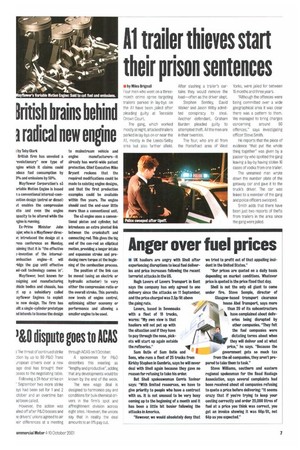Ifritish brains behind radical new engine
Page 7

If you've noticed an error in this article please click here to report it so we can fix it.
c by Toby Clark
British firm has unveiled a 'evolutionary" new type of ngine which it claims could educe fuel consumption by (Nand emissions by 50%.
Mayflower Corporation's e3 ariable Motion Engine is based I a conventional internal-cornustion design (petrol or diesel) ut enables the compression eta and even the engine apacity to be altered while the Vine is running.
Ex-Prime Minister John la*, who is a Mayflower direcir, introduced the design at a ress conference on Monday, aiming that it is 'the effective 3-invention of the internalambustion engine—it will ridge the gap until effective technology comes in".
Mayflower, best known for esigning and manufacturing :hide bodies and chassis, has A up a subsidiary called ayflower Engines to exploit re new design. The firm has jilt a single-cylinder prototype nd intends to license the design to mainstream vehicle and engine manufacturers—it already has world-wide patent protection. Chief Executive Mike Bryant reckons that the required modifications could be made to existing engine designs, and that the first production examples could be available within five years. The engine should cost the end-user little more than a conventional unit.
The e3 engine uses a conventional piston and cylinder, but introduces an extra pivoted link between the crankshaft and connecting rod. This gives the big end of the con-rod an elliptical motion, providing a longer intake and expansion stroke and producing more torque at the beginning of the combustion process.
The position of the link can be moved (using an electric or hydraulic actuator) to vary either the compression ratio or the overall stroke. This permits new levels of engine control, optimising either economy or performance and allowing a smaller engine to be used.
















































































































































